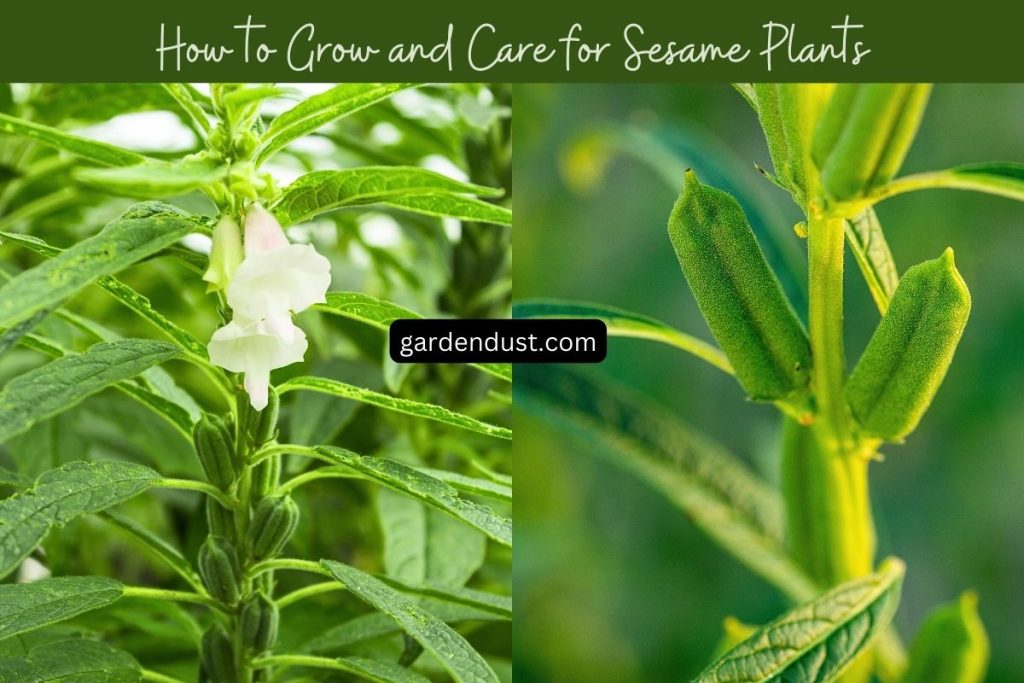Sesame plants, scientifically known as Sesamum indicum, have been cultivated for thousands of years for their valuable seeds, which are rich in oil and essential nutrients. These versatile plants are not only a source of culinary delight but also offer various health benefits. Growing and caring for sesame plants may seem daunting to some, but with the right knowledge and attention, anyone can successfully cultivate these plants. In this comprehensive guide, we will walk you through the step-by-step process of How to Grow and Care for Sesame Plants , ensuring a bountiful harvest. Let’ s start…
Choosing the Right Variety
Before embarking on your sesame plant journey, it’s crucial to choose the right variety for your climate and soil conditions. Sesame plants thrive in warm climates and well-drained soil. Some popular varieties include ‘Sesaco 37,’ ‘Nuseed SS100,’ and ‘Black Beauty.’ Consult with local agricultural experts or nurseries to determine the best variety for your specific region.
Planting Location and Soil Preparation
Sesame plants require a sunny location with at least 6 to 8 hours of direct sunlight daily. Choose a spot with well-drained soil as sesame plants are susceptible to root rot in waterlogged conditions. Prepare the soil by incorporating organic matter such as compost or well-rotted manure. This not only improves soil structure but also enhances water retention.
READ ALSO:-How To Plant Pansy From Seeds
Sowing Seeds
Sesame plants can be grown from seeds, and the ideal time for sowing depends on your local climate. In warm climates, sesame seeds can be directly sown into the soil after the last frost, while in cooler regions, it’s advisable to start seeds indoors and transplant later. Sow seeds 1/4 to 1/2 inch deep and space them about 12 to 18 inches apart. Water the seeds gently after sowing.
Watering and Moisture Management
Sesame plants are drought-tolerant once established, but consistent moisture is crucial during germination and early growth. Water the plants regularly, keeping the soil consistently moist but not waterlogged. Once the plants are well-established, gradually reduce watering frequency to encourage deep root development.
Fertilization
Sesame plants benefit from a balanced fertilizer with a slightly higher phosphorus content. Apply a slow-release fertilizer at planting time and supplement with additional fertilizer during the growing season, following package instructions. Be cautious not to over-fertilize, as excessive nitrogen can lead to lush foliage at the expense of seed production.
Weed Control
Weeds can compete with sesame plants for nutrients and water, so it’s essential to keep the growing area free from unwanted vegetation. Mulching around the plants helps suppress weeds and retains soil moisture. Regularly inspect the planting area and remove any weeds that may emerge.
Pruning and Thinning
As sesame plants grow, they may become dense, hindering air circulation. Prune the plants to improve airflow and reduce the risk of diseases such as fungal infections. Additionally, thinning is crucial to ensure that each plant has sufficient space to develop. Remove weaker plants, leaving the strongest ones spaced according to the recommended guidelines.
Pest and Disease Management
Sesame plants are generally hardy, but they can be susceptible to certain pests and diseases. Keep an eye out for aphids, caterpillars, and spider mites. Insecticidal soap or neem oil can be used to control pests naturally. Fungal diseases, such as powdery mildew, can be prevented by providing adequate spacing between plants for air circulation and avoiding overhead watering.
Harvesting Sesame Seeds
The time to harvest sesame seeds depends on the variety and growing conditions. Generally, sesame plants are ready for harvest 90 to 120 days after planting. The best indicator for harvest readiness is when the lower leaves of the plant begin to yellow. Use pruning shears to cut the entire plant a few inches above the ground. Hang the harvested plants in a dry, well-ventilated area to allow the seeds to dry further.
Seed Processing
Once the sesame plants have dried, it’s time to extract the seeds. Thresh the plants by beating or rubbing them to loosen the seeds. Winnowing can then be employed to separate the seeds from the chaff. This process involves allowing the wind to carry away the lighter chaff, leaving the heavier seeds behind. Alternatively, a fine mesh sieve can be used to separate the seeds manually.
Storing Sesame Seeds
Proper storage is essential to maintain the quality of harvested sesame seeds. Store the seeds in a cool, dry place in airtight containers to prevent moisture and pest infestations. Properly stored sesame seeds can have a shelf life of up to six months.
Growing and caring for sesame plants can be a rewarding experience, providing you with a bountiful harvest of nutritious seeds. By selecting the right variety, preparing the soil, and implementing proper care practices, you can cultivate healthy sesame plants in your garden. From sowing seeds to harvesting and processing, each step plays a crucial role in the success of your sesame cultivation. Follow this comprehensive guide, and soon you’ll be enjoying the benefits of homegrown sesame seeds in your kitchen. Happy Gardening…






